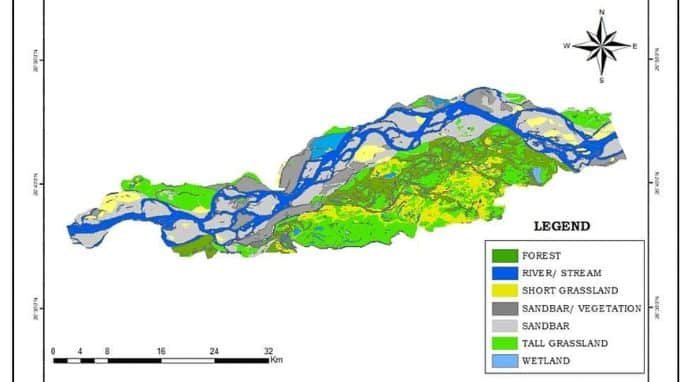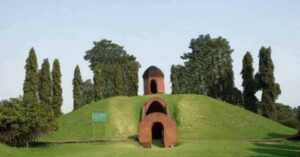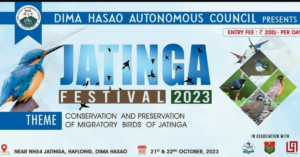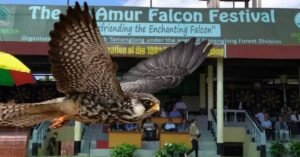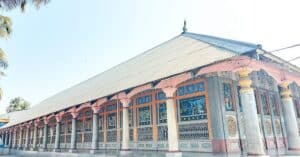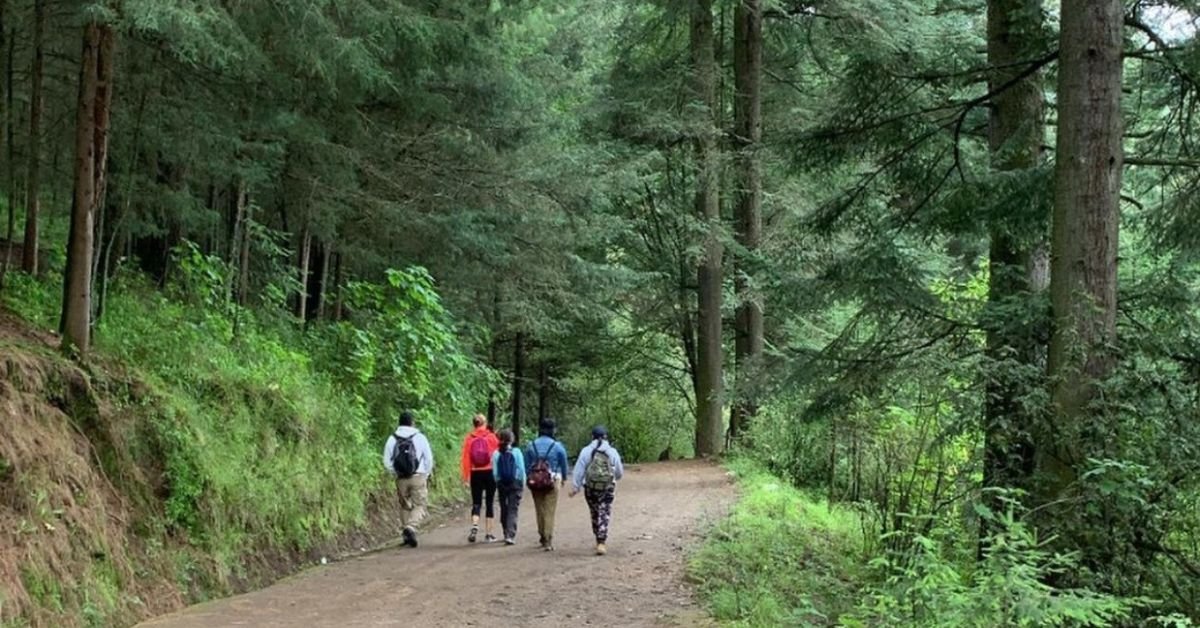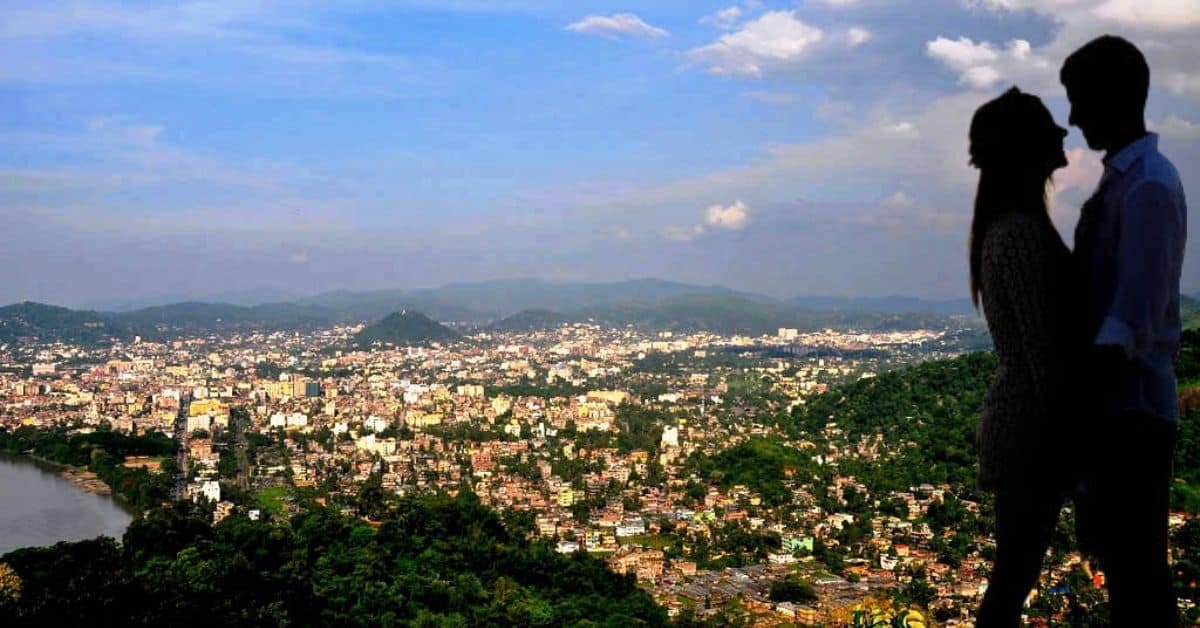Kaziranga National Park is a national park in the Golaghat and Nagaon districts of the state of Assam, India. The park, which hosts two-thirds of the world’s Indian rhinoceroses, is a UNESCO World Heritage Site. The park is home to large breeding populations of elephants, wild water buffalo, and swamp deer. Kaziranga is recognized as an Important Bird Area by BirdLife International for conservation of avifaunal species. Kaziranga is a vast expanse of tall elephant grass, marshland, and dense tropical moist broadleaf forests, criss-crossed by four major rivers, including the Brahmaputra, and the park includes numerous small bodies of water.
Geographic Location
Located in the Kaliabor and Bokakhat subdivisions of Nagaon and Golaghat districts in the state of Assam (India), Kaziranga National Park lies between latitude 26°30 N to 26°45 N and longitude 93°08 E to 93°36 E. It is around 40 kilometres long (approx. 25 miles) and 13 kilometres (approx. 8 miles) broad. The park is spread in 378.22 sq. km in which 51.14 km² has been lost to erosion by the Brahmaputra. Along with the present boundary of the park, 429 sq. km (166 sq miles) has been added and advised to separate the national park, so as to offer extensive habitat for growing population of wildlife or as a passageway for the safety of animals to Karbi Anglong Hills. The entire area of park is confined by the Brahmaputra River that forms the eastern & northern boundaries, and the Mora Diphlu that forges the southern boundary.
- Geographic coordinates: 1. Latitude: 26°30 N to 26°45 N 2. Longitude: 93°08 E to 93°36 E
- Size and Shape A. The park is approximately 40 kilometers (25 miles) long. B. Its width is roughly 13 kilometers (8 miles). C. Total park area: 378.22 square kilometers. 1. Erosion by the Brahmaputra River has resulted in the loss of 51.14 square kilometers of the park’s area. A proposed expansion adds an additional 429 square kilometers (166 square miles) to the park, potentially serving as a wildlife habitat or corridor to Karbi Anglong Hills.
- Boundaries Eastern Boundary: The Brahmaputra River forms the park’s eastern boundary. Northern Boundary: The Brahmaputra River continues as the northern boundary. Southern Boundary: The Mora Diphlu serves as the park’s southern boundary.
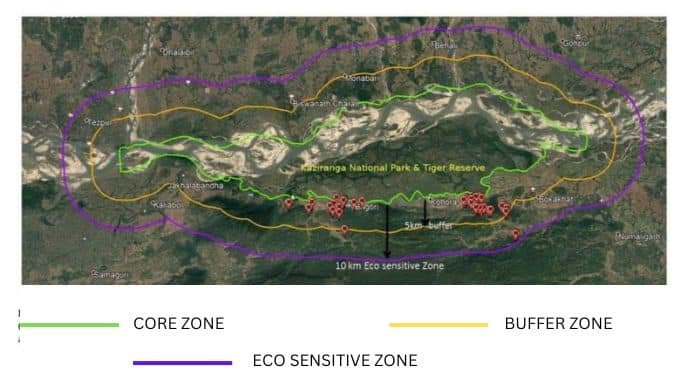
Proximity to major cities and transportation options
The nearest city to Kaziranga National Park with air connectivity is Guwahati, situated at a distance of 190 kilometers. Guwahati boasts both international and domestic flight services through LGBIA Airport, Guwahati. For travelers coming from outside Assam, flying to Guwahati is a convenient option. Alternatively, one can opt for a train journey to Guwahati Railway Station. From Guwahati, you can easily arrange for a cab ride to Kaziranga, typically costing around 6000 rupees. The road conditions are excellent, with a four-lane highway leading from Guwahati to Kaziranga, ensuring a smooth and comfortable journey to the park.
Unique geographical features of the Kaziranga National Park
Kaziranga National Park boasts a captivating blend of unique geographical features, creating a diverse and rich ecosystem. Its complex terrain encompasses elements like tropical rainforests, towering grasslands, extensive wetlands, sprawling sandbars, and a network of rivers and streams. What truly sets Kaziranga apart is its distinction as the habitat for the renowned “Big Five,” comprising the Indian Rhinoceros with an impressive population of 2,401 individuals, Tigers numbering 116, a substantial Elephant population of 1,165, the Asiatic Wild Buffalo, and the Eastern Swamp Deer, which counts 1,148 members. This park is also a haven for migratory birds and riverine dolphins. Notably, Kaziranga has recorded one of the highest densities of tigers in the country and hosts the largest population of Wild water buffalo. Furthermore, it provides a home for some of the world’s most magnificent serpents, including the reticulated python, Indian rock python, and the awe-inspiring king cobra. Kaziranga National Park is a true marvel of nature, offering a haven for both iconic and lesser-known species in its remarkable setting.

- Diverse Ecology of Kaziranga National Park
The rich and diverse fauna of the park
Large Mammals: Indian Rhinoceros, Wild Water Buffalo, Eastern Swamp Deer, Indian Elephant, Gaur, Sambar, Bengal Tiger, Indian Leopard,
Small Mammals: Hispid Hare, Indian Gray Mongoose, Small Indian Mongooses, Large Indian Civet, Small Indian Civets, Bengal Fox, Golden Jackal, Sloth Bear, Chinese Pangolin, Indian Pangolins, Hog Badger, Chinese Ferret-Badger, Particoloured Flying Squirrel
Primates: Assamese Macaque, Capped Langur, Golden Langur, Hoolock Gibbon (only ape found in India),
Riverine Mammals: Ganges Dolphin (Endangered)
Birds: Lesser White-Fronted Goose, Ferruginous Duck, Baer’s Pochard Duck, Lesser Adjutant, Greater Adjutant, Black-Necked Stork, Asian Openbill Stork, Blyth’s Kingfisher, White-Bellied Heron, Dalmatian Pelican, Spot-Billed Pelican, Nordmann’s Greenshank, Black-Bellied Tern, Eastern Imperial Eagle, Greater Spotted Eagle, White-Tailed Eagle, Pallas’s Fish Eagle, Grey-Headed Fish Eagle, Lesser Kestrel, Indian Vulture, Slender-Billed Vulture, White-Rumped Vulture, Swamp Francolin, Bengal Florican, Pale-Capped Pigeon, Great Pied Hornbill, Wreathed Hornbill, Old World Babblers (e.g., Jerdon’s and Marsh Babblers), Weaver Birds (e.g., Common Baya Weaver and Finn’s Weavers), Thrushes (e.g., Hodgson’s Bushchat), Old World Warblers (e.g., Bristled Grassbird), Black-Breasted Parrotbill, Rufous-Vented Grass Babbler
Reptiles: Reticulated Python, Indian Rock Python, King Cobra (longest venomous snake in the world), Indian Cobra, Monocled Cobra, Russell’s Viper, Common Krait, Monitor Lizards (e.g., Bengal Monitor and Asian Water Monitor), Turtles (15 species, including Assam Roofed Turtle), Tortoise (Brown Tortoise) and Fish (42 species, including Tetraodon)
History of conservation initiatives in Kaziranga National Park
- 1905: The Kaziranga Proposed Reserve Forest was created with an initial area of 232 km² (90 sq mi).
- 1908: Kaziranga was designated a “Reserve Forest.”
- 1916: The park was redesignated as the “Kaziranga Game Sanctuary,” allowing controlled hunting and restricted access for visitors.
- 1938: Kaziranga Game Sanctuary was opened to visitors as hunting was prohibited.
- 1968: The Assam National Park Act of 1968 was passed, officially declaring Kaziranga a designated national park.
- 1974: Kaziranga National Park was given official status by the central government, covering an area of 430 km² (166 sq mi).
- 1985: Kaziranga was declared a UNESCO World Heritage Site for its unique natural environment.
Safari options in Kaziranga National Park
Safari Gate/Zones
Sprawling over an area of 430 sq km, the park alias the hotspot of diversity is split into four areas; each has its own distinguish feature regarding grasslands, the density of mammals & bird, land topography, terrains. Below are some points of the pre-defined tourist circuits where the jeep safari takes place:
- Mihimukh in Central Range at Kohora
- Bagori in Western Range at Bagori
- Agaratoli in Eastern Range at Agaratoli
- Ghorakati in Burapahar Range at Ghorakhati
Jeep Safari Timings
- Morning Jeep Safari: 8:00 AM to 10:00 AM
- Afternoon Jeep Safari: 02:00 PM to 04:00 PM
Elephant Safari Timing
- Morning: 05:30 / 06:30
- Morning: 06:30 / 07:30
Kindly Note: Safari in Kaziranga National Park is closed by the authority during Monsoon months in Assam i.e. from June to October. As the area is flood prone, authorities do not allow safai inside the park. However, you can still visit the park during monsoon for limited sightseeing.
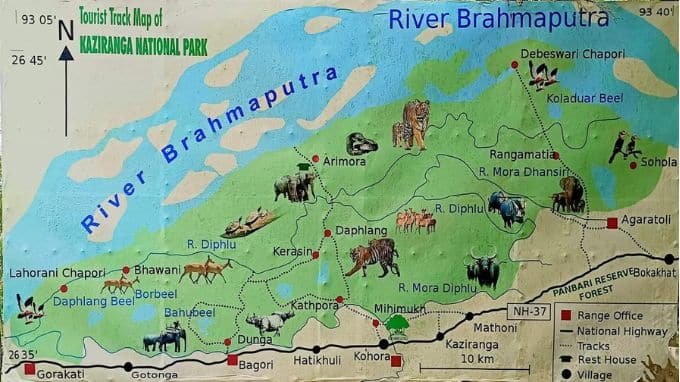
Why it is a UNESCO Heritage Site?
Kaziranga National Park’s UNESCO World Heritage status is a testament to its outstanding natural features, including its dynamic riverine processes, the creation of diverse habitats through annual flooding and controlled burning, and its crucial role in the conservation of endangered species such as the Indian one-horned rhinoceros, tigers, and Asian elephants. Positioned at the crossroads of major bird migration routes, the park’s wetlands also serve as vital stopover and wintering grounds for globally threatened migratory bird species. Additionally, its support for the endangered Ganges dolphin in its oxbow lakes underscores its significance in preserving aquatic biodiversity. This recognition highlights Kaziranga as a global treasure, deserving of protection and admiration.


